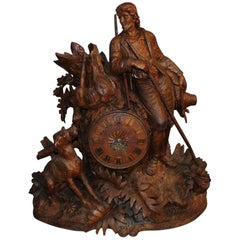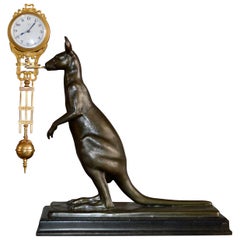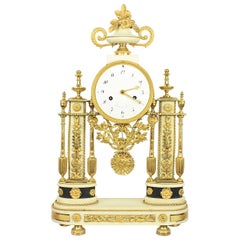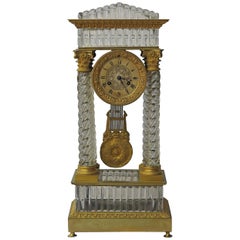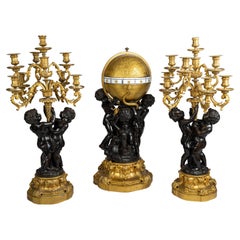Mantel Clocks
19th Century German Black Forest Antique Mantel Clocks
Brass
Early 1900s German Art Nouveau Antique Mantel Clocks
Bronze, Spelter
Late 18th Century French Louis XVI Antique Mantel Clocks
Carrara Marble, Enamel, Ormolu
Late 18th Century English Georgian Antique Mantel Clocks
Satinwood
1820s French Charles X Antique Mantel Clocks
Crystal, Bronze
19th Century French Napoleon III Antique Mantel Clocks
Bronze
1870s French Napoleon III Antique Mantel Clocks
Ormolu
1770s French Louis XVI Antique Mantel Clocks
Marble, Bronze
1780s French Louis XVI Antique Mantel Clocks
Bronze
Vintage, New and Antique Mantel Clocks
Personal time-telling devices may have migrated from our pockets to our wrists and finally onto our phones, but despite the convenience of a handheld digital timekeeper, nothing can beat well-made vintage, new and antique mantel clocks.
Invented by clockmakers in France and popularized in the 18th and 19th centuries, these practical yet ornate pieces were typically displayed on top of fireplaces or desks. While the most common mantel clocks were created in the traditional tambour style, which features a wide base that flares into an upright drum- or camelback-shaped case, modern clockmakers and furniture designers have experimented with their own ideas for these decorative objects over the years, introducing different forms and working with unconventional materials. A collection of whimsical, monochromatic handmade mantel clocks crafted by Dutch designer Kiki van Eijk, called Floating Frames, for example, features minimalist frames of anodized wire and ceramic clockfaces.
When shopping for an antique, vintage or new mantel clock, don’t be afraid to branch out. Wood mantel clocks of any era will bring a classic, elegant allure to the shelving in your living room or the bookcase in your bedroom, while Empire-style mantel clocks will comparatively boast eye-catching gilt bronze and pronounced sculptural attributes. Some Art Deco mantel clocks will feature an integration of marble or glass and will likely be marked by the decorative embellishments associated with that particular furniture style.
There’s just something about cool clocks, right? Spend your time with an extraordinary collection of mantel clocks on 1stDibs today.
